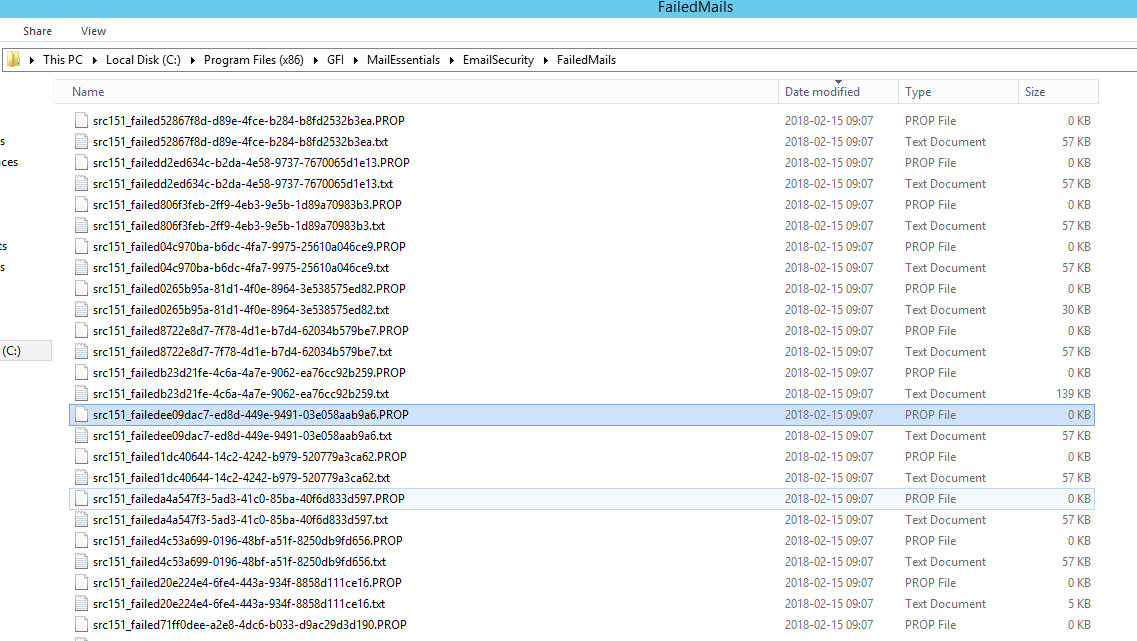


Still need help? Go to Microsoft Community. While it's very unlikely email protected will ever get such email, servers around the world are setup to inform the sender that he most likely mistyped e-mail address or simply recipient is no longer working for the company. In a hybrid scenario, Exchange Online must be set up correctly so that when a cloud-based user sends an email message to an on-premises user, Exchange Online routes the email message to the on-premises messaging environment.įor more information about accepted domains, see Accepted domains in Exchange Serverįor more information about hybrid deployment, see Exchange Server Deployment Assistant It lets you manage how messages are delivered. Exchange or Outlook may be placing such emails in the Junk mail folder. The Exchange admin center lists the domains that you added to your account through the Microsoft 365 portal. The fact that emails are ending in the Junk mail folder does not mean that GFI MailEssentials is scanning these emails. The maximum value supported is 209715200. Enter the maximum size in bytes (decimal). Right-click the new value and select Modify. Exploit engine The product’s Email Exploit Engine and HTML Sanitizer block email exploits and disable any malicious scripts. Navigate to HKLM\SOFTWARE\Wow6432Node\GFI\MailEssentials\EmailSecurity\Config and HKLM\SOFTWARE\Wow6432Node\GFI\MailEssentials\AntiSpam\Config Create a new DWORD named T2Mmaxmsgsize.

In the Accepted Domain window, in the This accepted domain is section, select Internal relay as the domain type. GFI MailEssentials’ unique scanner detects Trojans, worms and other malicious scripts within executables without the need for virus updates.
#Gri mailessentials emails not delivered software
Software such as antivirus or backup software is grabbing the Information/Mail store and is preventing GFI MailEssentials from routing mail to it. The av scan engine will fail to initialize and all emails are getting delivered to the failed mails folder.(MailEssentials\EmailSecurity\FailedMails) Errors in the MailEssentials\DebugLogs\AutoUpdate.log will match below. A module from either Microsoft Exchange, GFI MailEssentials or another program involved in mailflow is faulting (such as GFI MailEssentials scanning engine). This section of the SMTP RFC (Request For Comments) is the basis for Greylisting the anti-spam technology used to detect mail servers that are not.

Mimecast, in conformance with RFC standards, will always retry every message multiple times – so you’d essentially be deferring messages for no reason. However, functionally speaking, it’s completely fine (and probably recommended) to exclude the Mimecast IP’s from greylisting.Īs you may know, the point of such technology is to help eliminate spam from botnets and other “mass mailers” that only try sending the message once. This is not something we’ve come across before. Unfortunately, we wouldn’t be able to provide much insight into MailEssentials' specific functionality and why it be causing problems from a deferral perspective. I have not received a single piece of spam while under the protection of.
#Gri mailessentials emails not delivered free
Our retry schedule is posted in our Knowledge Base as and aligns with the behavior you see. Keeps me stress free knowing my email is protected and Im not receiving spam. The delivery you’re describing sounds expected – Mimecast uses a pool of IP addresses to send mail on behalf of our customers, and retry attempts will originate from different ranges in most day-to-day situations. This mode can be used for example, when installing GFI MailEssentials in a DMZ, before the firewall that separates your internal and external networks. We use it ourselves when filtering inbound emails on behalf of our customers to make sure that they’re retrying the connection per RFC standards. In this mode, GFI MailEssentials retrieves the list of users from a remote Active Directory domain, even though the GFI MailEssentials server is not joined to a domain. Hey Jon - Greylisting is a great piece of technology.


 0 kommentar(er)
0 kommentar(er)
